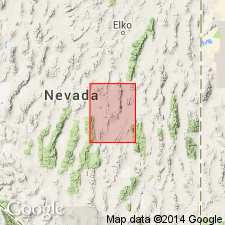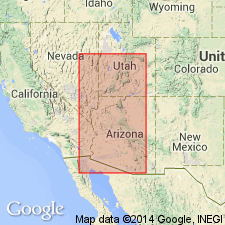
- Usage in publication:
-
- Hayes Canyon member*
- Modifications:
-
- Original reference
- Dominant lithology:
-
- Limestone
- AAPG geologic province:
-
- Great Basin province
Summary:
Pg. 49-50, 51, pl. 2. Hayes Canyon member of Devils Gate limestone. Made up mostly of thick-bedded limestones containing biostromes of corals. Basal bed is dark-gray oolitic argillaceous ostracod-bearing limestone that in most places weathers to shades of pink. Upper 150 feet or so consist of limestone beds that average about a foot in thickness, many of which contain stringers or lenses of dark chert. Thickness 780 feet in northern part of Newark Mountain. Contact with underlying Meister member (new) marked by basal oolitic limestone bed. Boundary with overlying Pilot shale is sharp, but no evidence of unconformity at contact. Age is Middle and Late Devonian.
Well exposed along crest of Newark Mountain and named from Hayes Canyon, which drains west slope of [Newark] Mountain, vicinity of Eureka, White Pine Co., central NV.
Source: US geologic names lexicon (USGS Bull. 1200, p. 1710).

- Usage in publication:
-
- Hayes Canyon Member*
- Modifications:
-
- Age modified
- AAPG geologic province:
-
- Great Basin province
Summary:
Hayes Canyon Member of Devils Gate Limestone. Age changed from Middle and Late Devonian --to-- Late Devonian.
Source: Changes in stratigraphic nomenclature, 1968 (USGS Bull. 1324-A, p. A6).
For more information, please contact Nancy Stamm, Geologic Names Committee Secretary.
Asterisk (*) indicates published by U.S. Geological Survey authors.
"No current usage" (†) implies that a name has been abandoned or has fallen into disuse. Former usage and, if known, replacement name given in parentheses ( ).
Slash (/) indicates name conflicts with nomenclatural guidelines (CSN, 1933; ACSN, 1961, 1970; NACSN, 1983, 2005, 2021). May be explained within brackets ([ ]).

